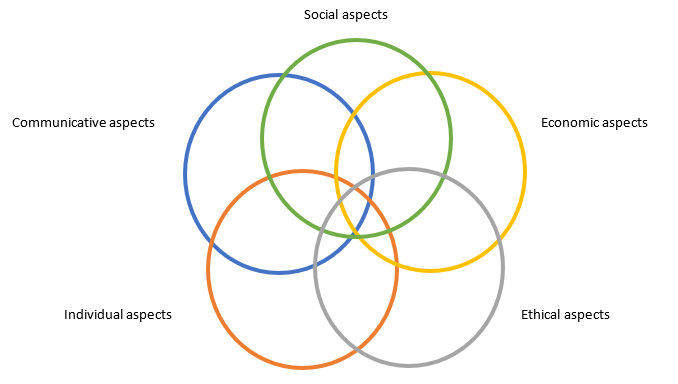1. Patient involvement in different phases of HTA
1.3. Patient input in HTAs
Patients' knowledge and experiences of, and attitudes towards e.g. illness, suffering, treatment and the health technology they are involved with are very much linked to everyday life and based on their own actual experiences and/or those of others close to them and on a shared everyday culture.
International HTA reports have for the most part regarded the “patient” as part of the health technology being assessed [6] but in recent years there is a tendency to deal with patient aspects individually. When exploring patient aspects it is often appropriate to address aspects separately from health technology, organisation and economic aspects. This can be done by incorporating results from different types of patient satisfaction surveys, investigations of patient preferences and/or qualitative studies of patient needs, desires and experiences.
|

Figure 3 Patient experiences of a given health technology. Adapted after Kristensen [7].
The model shows that the various aspects should not be understood in isolation. However, from an analytical point differentiation is needed. Some examples of what one can choose to investigate within each area are set out below [7].
Social aspects: This covers whether, from a patient perspective, the technology will or has had, for example: a direct and/or indirect influence on/significance for work, family life, leisure time lifestyle/quality of life.
Economic aspects: This covers whether, from a patient perspective, the technology entails, for example: direct and/or indirect costs in relation to work, family life, leisure time, lifestyle, and quality of life.
Ethical aspects: This covers whether, from a patient perspective, the technology entails, ethical considerations, ethical choices, or ethical dilemmas.
Individual aspects: This covers whether, from a patient perspective, the technology entails: existential experiences, e.g. insecurity, worry, hope, anxiety, patient roles and stigmatizing, courage to face life satisfaction, use of one’s own resources (self-care, empowerment).
Communicative aspects: This covers whether, from a patient perspective, the technology will have or has an influence on: exchange of information, patients’ knowledge and understanding of the technology, modified relations between the patient and health professionals, and any potential positive or negative impact on involvement in decision-making about one's health.
Patients in HTA may help pointing to which relations between aspects are most relevant based on the specific national or local situation in which the HTA provides recommendations. Patients should be aware that even though valid evidence is available it may not always represent the situation in which they live themselves - and therefore a careful evaluation of the social, ethical and political situation is of high importance. This is where patients should critically evaluate the evidence that will be included in the assessment.